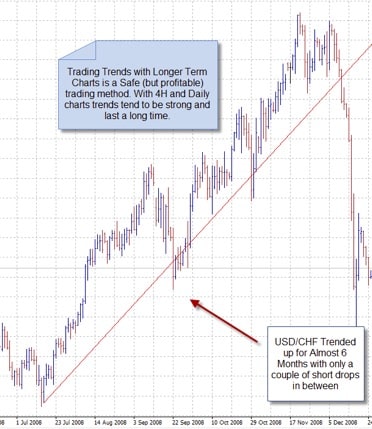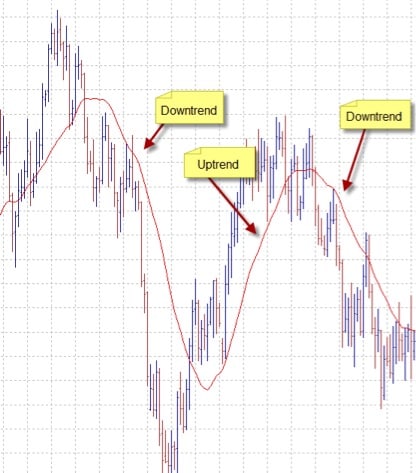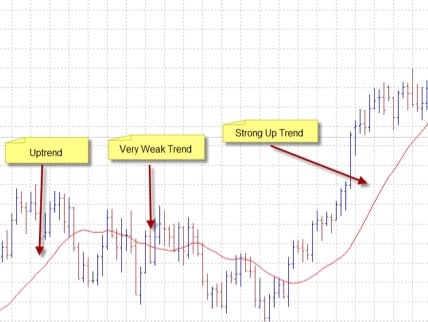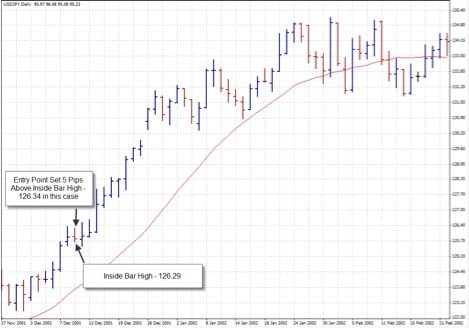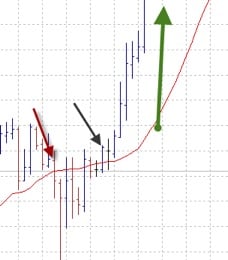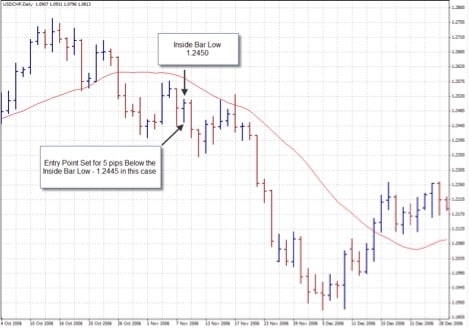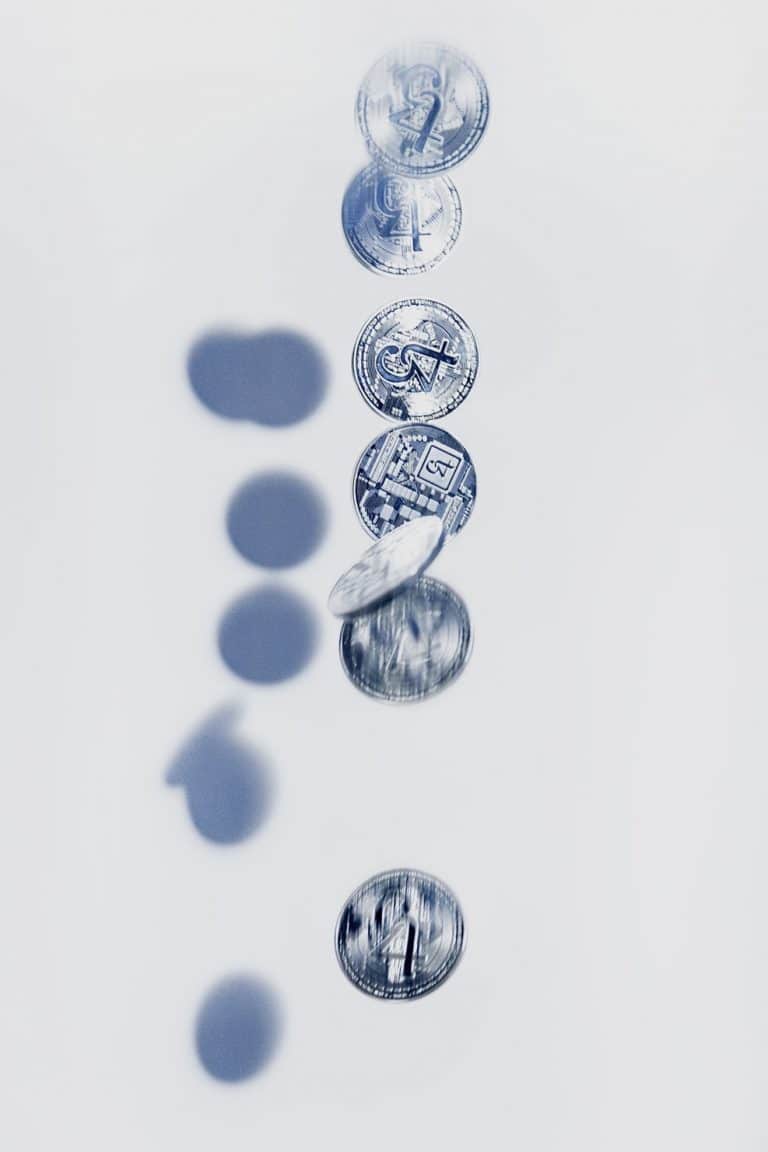Introduction Forex Five
When it comes to trading Forex, you’ll often hear a trader talk about “their” trading system. That is, their one system that they consistently use to earn Forex profits.
Having a stellar trading system is all good. You should have a main system that you trade with consistently; but, there’s one major problem with getting into the “my trading system” mentality. Trading one system may earn you profits over time, but the real secret to Forex mastery is actually mastering many trading systems.
The currency markets are huge, they are moved my many different factors, they suffer from different market conditions, and even a single currency may not always trade well with one system. Having a multitude of trading methods (and knowing when and how to use them) is the real key to huge profits with Forex.
Now I’m not advocating that you don’t find a trading system that works for you. If you want to make a living at Forex you should. What I am saying is that to really earn that living, having more than one system will help you when things go awry.
Think about it for a moment.
Imagine you’re trading a swing trade system. You always trade two or three currencies with the system, and overtime you have grown your account. The problem you keep running into is that when things change (ie. the market starts trending, a news release drops the bottom out of the market, etc) your system simply doesn’t work.
In this scenario many traders just stop trading until the market returns to its original conditions. Maybe a few days go by, or a week, and during that time they aren’t earning profits.
If you had another trading system to work with – one better suited to the new market conditions – then you wouldn’t have to worry when things change. In this manual that is exactly what I will give you: More trading systems to work with.
We will cover trading systems that really work, and in this case I’m telling you right from the start – don’t marry one system.
Sure you may find one that works best for you, but learn them all so that you have more to work with when markets change or when things aren’t working as they were yesterday.
Who am I to teach you Forex?
I have been trading Forex since I was out of college. In fact, my first job was on a Forex trading floor (before the days of the Internet and open trading systems). In my days of trading for someone else, I was taught what everyone else tends to be taught when trading.
Get one system (in that case it was given to me), follow it religiously, use your money management rules, and trade. It wasn’t until much later when I started trading Forex at home for myself that I began to learn the benefits of trading more than one system.
It was actually an epiphany that came to me when the market was off and I had experienced a rather large drawdown. I had lost 8 trades in a row. The market was moving way too fast for my regular system. Every time I thought things were going to turn around and I got a trade signal, a breakout would occur, and I would end up on the losing end of things. None of my trades were going as planned and I needed to try something different.
Prior to that day, I had been taught a breakout system by another trader. Since my problem was that the currency pairs I was trading kept breaking out when I expected them to turn around, I started trading his system for a few days.
To my surprise, the problem was solved, and I was able to earn pips even when the market didn’t fit well with my regular trading system. Since that day I have taken the time to find different systems that work in different conditions, and I trade them all.
Today I am going to share all of that experience with you (and the best of those trading systems) to ensure that you always have a system that works.
What this Manual is and what this Manual is not
There are a couple of important things to note before we move into teaching you to trade. Most importantly I need to say that this is a manual on trading systems. You won’t find information on Forex basics, money management, or any other basic concepts here.
The whole manual assumes that you know how to read a chart, that you understand terms like breakout, and that you know what back testing is and know how to test a system. And, in general, I assume that you are familiar with Forex.
If you aren’t yet at the level of “past the basics”, you really should take the time to learn them first.
It isn’t that you won’t be able to trade any of the systems in this manual if you don’t – I’ve laid them out clearly enough that anyone could. The problem is that without a good prior knowledge of important concepts like money management, basics chart reading, and Forex in general you will have times where you have trouble trading (with any system including the ones I am about to give you).
With money management especially, if you aren’t using a sound money management system, no trading system will help you.
You might win sometimes, but you will have trouble staying consistently profitable, and you’ll very likely experience large drawdown’s that are near impossible to recover from.
It is my suggestion that if you feel you lack knowledge in any of the basics that you take the time to learn them before trading with the systems I will teach you in this manual.
With that said, let’s just dive right in.
The Trend Breakout System
If you are a part time trader, this is one system that is for you. Imagine being able to take 20 minutes each day to trade. A little time at night to plan your trades and set your entry points is all that is required to trade this system.
This type of system is actually one of the best ways to trade Forex. Since the system doesn’t require you to sit in front your PC monitoring each trade you are much more likely to let your trades run and consistently earn profits with them. Simply allowing a trade to run is important to earning.
Many don’t have the discipline to monitor their trades without getting actively involved (ie. ending the trade too soon to try to protect profits).
With the first system I am going to teach you that emotional element is taken out of the trade. Even if you are a full time trader, my suggestion is that you trade this system the way it is laid out:
Take the time to look over the charts at the end of the day, set your entry points, and then leave it alone until the trade is either profitable or has stopped out. If you use the correct stops and take profit levels, you will earn money consistently with this trading system.
System Overview and Chart Setup
As the name suggests, the Trend Breakout system is a trading system that trades with the trends and focuses on when a currency breaks out and begins to strongly follow the current trend.
Trading with the trend is always a safe way to trade. Most currencies tend to trend strongly in one direction for long periods of time, and trading with that strong trend is always better than trading against it.
With our system of trading, we will be trading off of the daily charts, and it is a night before type of system. That is, the trades you make in the morning will be based off of chart data from the end of the day prior to the one you are trading. A trade will typically be held for a day or two, and sometimes can last up to 1 week.
This trading system only uses one indicator. We use a 21 period Simple Moving Average. This indicator is really just used to ensure we are on the right side of the trend, and our trades will be made off of the bars on the charts themselves.
To setup for this trading system, fire up a daily chart of any currency pair, and add a 21 SMA. Your chart should look like this:
The most important thing to notice on the chart above is simply the trend using the SMA. When the line is pointing up, it’s an uptrend, when it’s pointing down it’s a downtrend. Simple, right?
You also need to be able to gauge the momentum of a trend. Again this is done with the SMA. If the line has a strong slope to it, then it is a strong trend. As the line flattens out it tells us that either the trend is slowing down, or it’s about to change directions. In either case we consider this a weak trend, and we don’t want to trade with a weaker trend.
If this isn’t clear, take some time looking over some charts with an SMA 21 on them. Learn to identify when a trend is strong, and when it is weak or about to change directions. Then move on to the Entry Signals and Stops sections.
One important note before we move on: This particular trading system is well suited for any currency pair that is currently in a trend. You will be much better off working with 7 or 8 currency pairs to identify the strongest trends and the best trade setups. When you look at the end of day data, using more currencies will allow you to choose the best trades. When you start with this system trade 2 or 3 currencies, but as you learn it well start checking all 8 charts each day.
Entry Signals and Stops
Our entry signals for the Trend breakout system are based on the candles or bars themselves. What we are looking for is an inside bar. That is the bar (or candle if you use candle charts) for the day must be inside the bar from the day prior.
Looking at the screenshot to the left, the smaller blue bar closed the day inside the prior day’s bar. The high for the day was lower, and the low for the day was higher than the previous day – making the small candle engulfed by the prior day.
This is our entry signal for this system.
If we are currently in a downtrend, then our entry point would be set to five pips below the low point of the inside bar. If we are in an uptrend our entry point would be set to five pips above the high of the inside bar (smaller bar in the screenshot).
To summarize our entry rules:
- Use only daily charts and identify inside bars with end of day data (looking at a chart in the evening when the bar has closed)
- Identify the trend using the SMA 21. We only trade in a trend and not when the line is flat.
- Look for an inside bar that is engulfed by the previous day’s bar.
- For a long trade in an uptrend- Set your entry point 5 pips above the high of the inside bar when in an uptrend
- For a short trade in a downtrend – Set your entry point 5 pips below the low of the inside bar when in a downtrend.
- One last rule – don’t use a Sunday bar as an inside bar – these bars do not count.
Stops
For this trading system we are going to use stops based on the currency pair we are trading. This allows us to set stop levels that fit with the typical daily range and allow us breathing room when we enter our trades. At the same time, these stop levels allow us to manage our risk to an acceptable level.
- For the EUR/USD use a 50 pip stop
- For the USD/JPY use a 50 pip stop
- For the USD/CAD use a 60 pip stop
- For the EUR/JPY use a 90 pip stop
- For the GBP/JPY use a 100 pip stop
- For the USD/CHF use a 50 pip stop
- For the AUD/USD use a 50 pip stop
- For the GBP/USD use a 60 pip stop
Exit Rules
The exit rules for this trading system are also quite simple. When we set our entry point, and our stop level, we also set a take profit level.
The take profit level should be set to 2 times whatever your stop was. For example if you were trading the GBP/USD and you set your stop at 100 pip, you would set your take profit at 200 pips.
Of course you can adjust your stop and let the trade run a bit when you near your take profit level, but in my experience setting a take profit level with this system works the best.
By setting your profitable exit point at twice what your stop level is, that means you only have to win on 33% of your trades to stay profitable. In many cases using both the suggested stop and the two times rule for take profits, your trades will get entered automatically in the morning, and when you check them that night you will already have hit your take profit level.
Trade Examples
To add clarity to this trading system let’s look at two trade examples. We will cover a long trade and a short trade to give examples of each. This trading system is quite simple as long as you can identify trends and identify the inside bars.
Long Trade Example
In the USD/JPY chart show below, the currency is currently in a strong uptrend (and if I could show more chart it has been for a while). We have an inside bar forming after the currency pair had climbed for three days straight.
Looking at the bar, the high for the day was 126.29. From our entry rules we set our entry point five pips above the high of the inside bar at 126.34.
We are trading the USD/JPY so we set our stop at 50 pips behind the entry point: 126.34 – 0.50 = 125.84.
We set our take profit at 2 times the stop. In this case its 50 x 2 = 100 pips, and 126.34 + 1.00 = 127.34
Although it’s impossible to see from the daily chart, this trade ended up hitting its take profit level. Zooming in to an hourly chart for a clearer view:
At the beginning of the trading day, the currency pair dropped back. It wasn’t until about 7 hours later that our entry point was hit and then the currency pair made its way up and hit the take profit level the next day.
Short Trade Example
Looking at a short trade example, in the USD/CHF screenshot below we have an inside bar formation, and we are currently trending down.
This is a fairly new trend, but after the SMA has been flat for a time it is now pointing down, and the last 7 days closed below the SMA. We do identify this as a strengthening of the trend.
The inside bar had a low of 1.2450. Our entry point is set 5 pips below that at:
1.2450 – 0.0005 = 1.2445
We are trading the USD/CHF so we set a 50 pip stop:
1.2450 + 0.0050 = 1.2500
We set our take profit at 2 x 50 pips, or 1.2450 – 100 = 1.2350
In this case our entry point is hit about 2 hours into the day, and our take profit level was hit about 6 hours later.
Important Notes
A couple of final notes about this system. When you begin trading with this system it is suggested that you focus on 1 – 2 currency pairs (choose the pairs that currently have the strongest trends on the daily charts). This will allow you to familiarize yourself with the trend breakout system while focusing on just a couple of currency pairs. If you begin by trading a couple of currency pairs that are in a strong up trend or down trend then you can profit from those currencies by riding out the trends.
Wait for the inside bar, make your trade, and then repeat it when the next inside bar occurs. As you get more familiar with the system itself, start looking at 7-8 charts each night, and identifying the best 2-3 trades from all of those charts.
As a final note, always use sound money management principles and manage your risk levels to an appropriate amount for your account (usually means limiting your trade size to 2% of your trading float).

